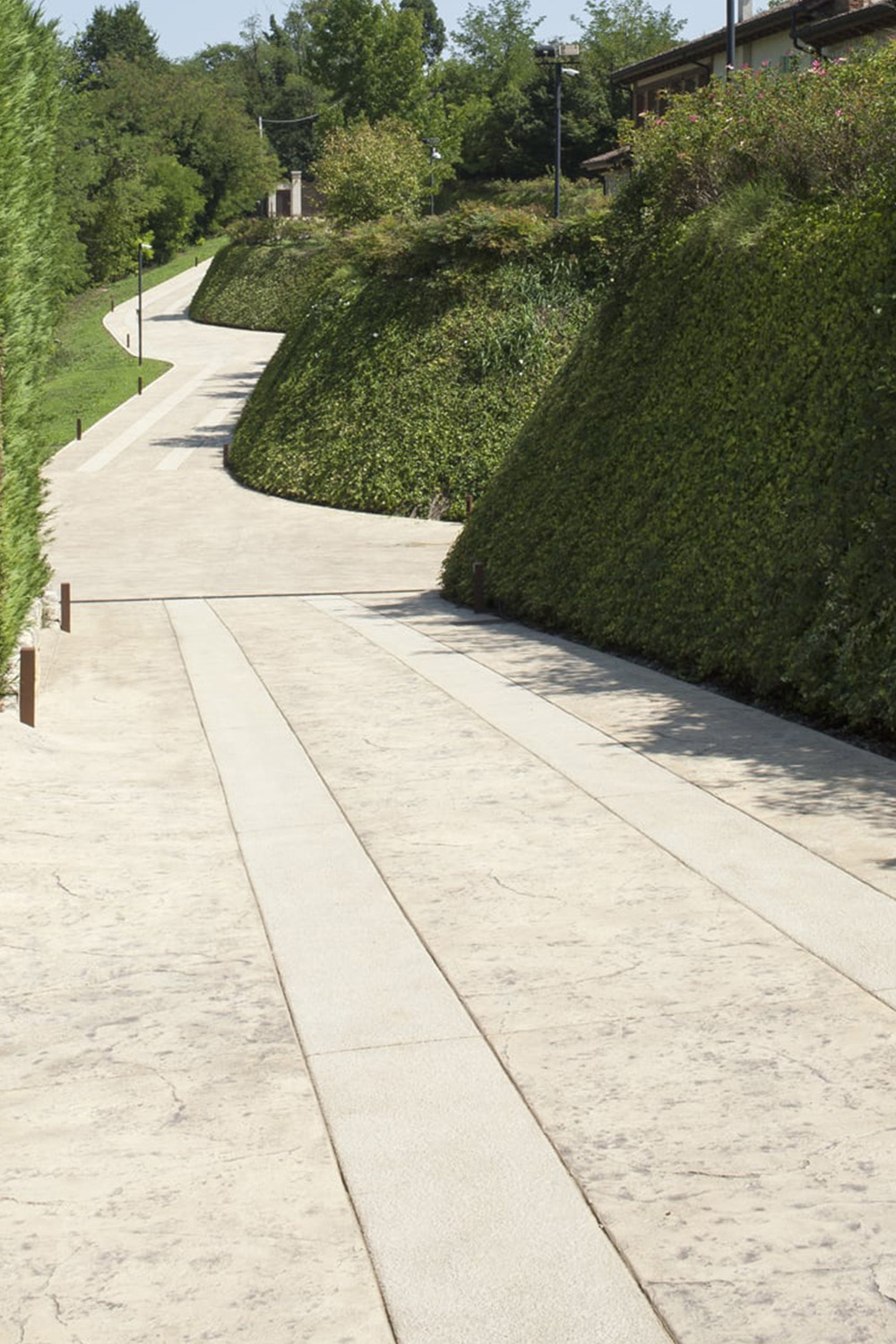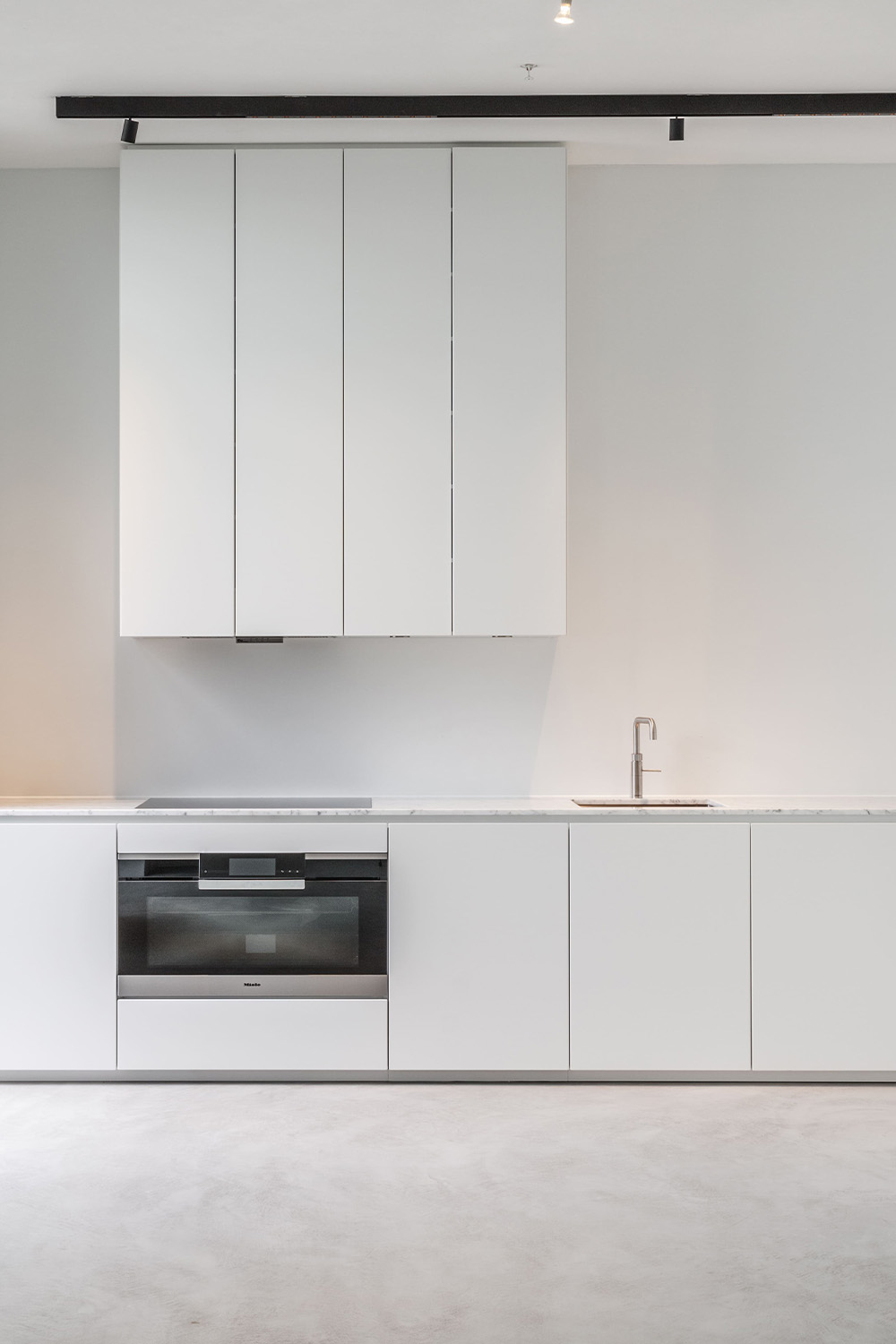What is coloured concrete?
Coloured concrete is a variation of traditional concrete in which colour pigments are added during the mixing process. These pigments can be natural or synthetic and are available in a wide range of colours. The result is a solid and resistant surface that maintains the desired colour without the need for further treatment.

The advantages of coloured concrete
1. Custom-made appearance
The main advantage of coloured concrete is its wide range of custom possibilities. Whether for the interior or the exterior, for floors or walls, coloured concrete allows you to create unique effects whilst ensuring a perfect colour integration with the overall design of the space.
2. Durability
Concrete is known for its strength and longevity. Coloured concrete maintains these properties, offering a durable solution for surfaces that must withstand heavy use, such as garage floors, patios, and commercial areas.
3. Minimal maintenance
Once installed, coloured concrete requires very little maintenance. It is resistant to stains, scratches and daily wear and tear. It does not require periodic painting or refinishing, which makes it a practical and affordable choice.

4. Versatility of Use
Coloured concrete is extremely versatile and can be used in a variety of applications, including floors, walls, countertops and furniture. It can be moulded into different shapes and combined with other decorative techniques to achieve unique effects.
5. Sustainability
Recycled materials are often used to produce coloured concrete, thereby reducing its environmental impact. In addition, the long life of the material reduces the need for frequent replacements, further minimising the impact on the environment.
Different types of coloured concrete
Mass coloured concrete
This method consists in mixing the pigments directly with the concrete mass. This ensures a uniform and deep colour, which does not deteriorate over time.
Surface coloured concrete
Pigments are applied to the concrete surface after pouring. This method is ideal for creating specific decorative effects, such as textures or special patterns.
Microcement
Microcement is a thin, durable coating which can be applied over existing surfaces. It is ideal for quick renovations and offers a wide range of finishes.
Stamped concrete
Stamped concrete is the result of the combination of colour and special moulds to create surfaces that mimic natural materials such as stone, brick, or wood. It is a popular choice for driveways, patios and walkways.

Applications of coloured concrete
Floors
Colored concrete floors are ideal for creating elegant and modern environments. They are perfect for homes, offices and commercial spaces thanks to their resistance and ease of maintenance.
Walls
Coloured concrete walls add a touch of sophistication and modernity to interior spaces. They can be used as accent walls or complete wall coverings.

Countertops
Coloured concrete countertops offer a durable, easy-to-clean surface that is ideal for kitchens and bathrooms. They can be customised with unique colours and finishes.
Furnishings
Coloured concrete can be used to create custom furnishings such as tables, chairs and benches, adding an element of industrial design to interiors.
How do you colour concrete?
Colouring concrete is a process that can be done at different stages of concrete production or application. One of the most common techniques is to add colour pigments directly to the concrete mix during the preparation phase. These pigments, which can be either natural or synthetic, are carefully mixed with cement, water and aggregates to ensure a uniform and long-lasting colour. Another technique — as mentioned before — involves applying colouring agents to the surface of fresh concrete. This method, known as surface colouring, is often used to create specific decorative effects such as patterns and textures. There are also more advanced solutions, such as the use of translucent or luminescent colourants, which allow for unique and innovative aesthetic effects.
What is coloured concrete used for?
Coloured concrete is used in a wide range of applications. It is especially popular in architecture and interior design to create floors, walls, and decorative surfaces that stand out for their unique and customised look. In residential settings, coloured concrete is often used to create interior and exterior flooring, countertops, and even custom furniture. In commercial settings, it is a popular choice for retail, office, and public spaces. Coloured concrete can also be used in infrastructure projects, such as sidewalks and plazas, where it can greatly enhance the visual appeal of the urban environment.
Choosing concrete colours
The choice of colours for concrete depends on the desired aesthetic effect and the environment in which it will be used. The pigments used to colour concrete are available in a wide range of shades, ranging from natural and earthy colours, such as brown, beige and grey, to more vivid and bold ones, such as red, blue and green. The most common colours include grey and earth tones, which easily integrate into any architectural context and are ideal for creating an elegant and sober look. For more creative and dynamic projects, you can choose bright colours that add a touch of originality and personality to the spaces. In addition, different colours can be combined to obtain shaded or geometric effects, making coloured concrete an extremely versatile solution for any design project.

Ideal Work’s colours
Ideal Work offers a wide range of colour options able to satisfy every aesthetic and functional need. The main shades are contained in the following five colour lines:
1 – Light and soft shades: perfect for creating bright and relaxing environments, ideal for residential and commercial spaces that require a welcoming atmosphere
2 – Grey shades: they provide elegance and modernity. Particularly suitable for contemporary and minimalist contexts.
3 – Dark shades: they add depth and sophisticated seriousness, which makes them ideal for spaces that require a touch of class and intensity.
4 – Vibrant colours: perfect to create focal points and to add dynamism to spaces. Ideal for creative and commercial environments.
5 – Pastel shades: delicate and refined, these shades are perfect for environments that require a touch of softness and serenity.
Each line has been designed to offer harmonious combinations, allowing you to play with colours to obtain tone-on-tone effects or balanced colour contrasts. Ideal Work is committed to providing colour solutions that not only improve aesthetics, but make spaces more liveable and pleasant.
For more information on Ideal Work’s colour lines and to explore all the options available, visit our dedicated colour page.